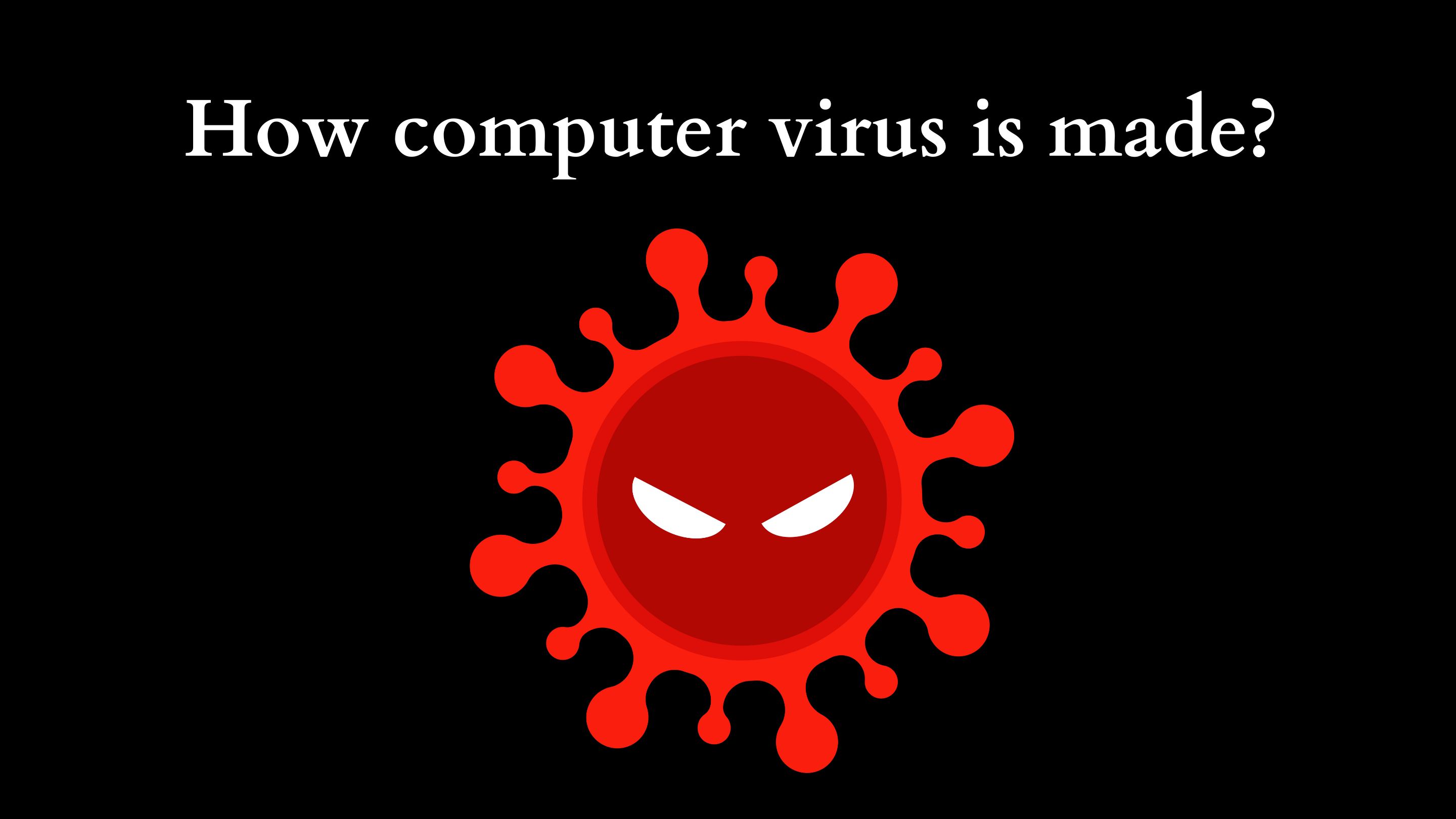How Computer Virus is Made
This blog post is teaching you about how computer virus is made, so enjoy reading and securing your computers. In the ever-evolving digital landscape, cyber threats have become an omnipresent concern for individuals, corporations, and governments alike. Among these threats, computer viruses stand out as one of the most notorious. Although we often hear about the consequences of these malicious programs, the mechanics of how they are created remains an obscure topic for many. This blog post aims to shed light on the complex processes involved in the creation of computer viruses, the motivations behind their development, and the implications of such cyber threats in our increasingly interconnected world.

What is a Computer Virus?
A computer virus is a type of malware designed to replicate itself and spread from one computer to another. It attaches itself to legitimate programs or files, often remaining dormant until executed. Upon activation, the virus can perform harmful actions, such as corrupting data, stealing sensitive/ information, or using the infected system to spread to other computers.
The Anatomy of a Computer Virus
To understand how a computer virus is made, it is essential to recognize its fundamental components. A typical virus comprises several key elements:
- Infection Mechanism: This is how the virus attaches itself to a host file or program. It typically exploits vulnerabilities in software or uses social engineering tactics to trick users into executing it.
- Payload: The payload is the part of the virus that performs action upon execution. It comprises the malicious code that dictates what operations the virus will carry out—such as data corruption, system slowdown, or unauthorized access.
- Replication Capability: To spread, a virus must be able to replicate itself. This often involves creating copies of itself and inserting them into new files or systems, which can occur through networked connections, email attachments, or physical media.
- Trigger Mechanism: Many viruses include a trigger mechanism that determines when the virus will activate. This could be a specific date, the completion of a certain action by the user, or even random conditions.
The Process of Virus Creation
The creation of a computer virus typically involves several stages, from conception to execution. Here’s a detailed walkthrough of the process:
- Motivation and Intent: Developers of computer viruses often have various motivations. Some are driven by financial gain, aiming to create ransomware that demands payment. Others may intend to disrupt services for political reasons or engage in hacktivism. Understanding the underlying motivations can provide insight into the manner in which viruses are created and deployed.
- Research and Knowledge Acquisition: Creating a computer virus requires a solid understanding of programming languages, operating systems, and vulnerabilities within software. Virus developers often engage in extensive research to identify weaknesses in systems or software that can be exploited. Resources may range from academic papers to underground forums where like-minded individuals share knowledge.
- Development Environment: Once a virus creator has defined their goals, they set up a development environment equipped with the necessary tools. This environment may include programming languages such as C, C++, or Python, and debugging tools to analyze the behavior of the virus at various stages of development.
- Writing the Code: This is where the actual creation of the virus takes place. Developers write the code, paying close attention to how it can initiate replication, execute its payload, and ensure stealth to evade antivirus software. This stage requires creativity, as many successful viruses conceal their presence until triggered.
- Testing: Before deploying their virus on a wider scale, developers typically test it in controlled environments to ensure it behaves as intended. Such testing is crucial to avoid inadvertent damage to their systems and to refine the virus’s functionality.
- Deployment: Once the virus has been tested and refined, its creator can deploy it via various channels. This could involve phishing emails, infected USB drives, or leveraging vulnerabilities in popular software.
Motivations Behind Virus Development
The creation of computer viruses is often driven by a myriad of factors, which can generally be classified into several categories:
- Financial Gain: Financially motivated cybercriminals may create viruses to steal sensitive personal or corporate information, demand ransoms, or facilitate fraud.
- Political Activism: Hacktivists may craft viruses as acts of protest against government policies or corporate practices. Such viruses target organizations to draw attention to their causes.
- Intellectual Challenge: For some programmers, the primary motivation is the intellectual challenge and thrill of creating complex code. These developers may not have malicious intent but can inadvertently cause harm.
- Reputation Building: In some underground communities, creating and successfully deploying a virus can boost an individual’s reputation. The “bragging rights” associated with successfully infiltrating well-defended systems can motivate some developers to indulge in cybercriminal activities.
Preventive Measures and Counteracting Viruses
Understanding the intricacies of virus creation can aid in the development of better defensive strategies against these threats. Here are some key practices to mitigate the risks of infection:
- Regular Software Updates: Keeping software up to date ensures that vulnerabilities are patched, reducing the risk of malware exploitation.
- Robust Antivirus Solutions: Employing comprehensive antivirus solutions can identify and quarantine malicious programs before they can activate.
- Education and Awareness: Users should be educated about the risks of opening suspicious email attachments or downloading unverified software. Awareness initiatives can significantly reduce the success rates of phishing attacks.
- Data Backup: Regularly backing up data ensures recovery in the event of an infection, especially in cases of ransomware attacks.
Conclusion
The creation of computer viruses is a sophisticated process characterized by technical expertise, strategic planning, and varied motivations. While understanding this process does not condone the actions of those who create these malicious programs, it provides valuable insights into the realm of cybersecurity. As technology continues to advance, so too will the methods utilized by cybercriminals, emphasizing the need for ongoing vigilance and proactive measures in the protection of digital environments. By fostering an informed and prepared community, we can collectively mitigate the risks posed by computer viruses and contribute to a safer cyberspace for all.
Shop Now






